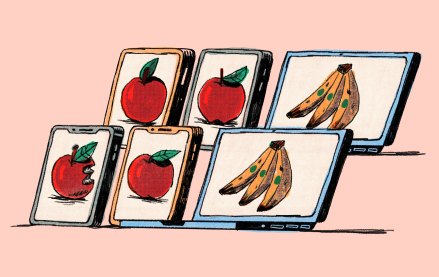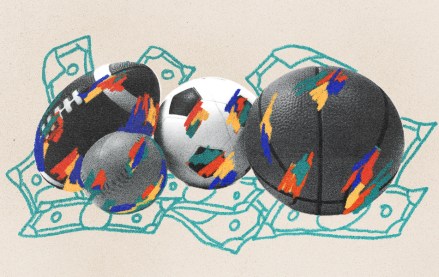Marketing Briefing: Here’s what marketers put on the back burner for the foreseeable future

This Marketing Briefing covers the latest in marketing for Digiday+ members and is distributed over email every Tuesday at 10 a.m. ET. More from the series →
Everyone in advertising is dealing with the same problem: uncertainty.
As a few agency execs put it while chatting with me on Monday, there’s a constant nervous energy in the industry right now, with everyone wondering what new geopolitical shift marketers will have to react to next. Monday morning, for example, stateside marketers awoke to the news that the United States and China had agreed to a truce with both easing tariffs temporarily; the U.S.’s tariffs on China will come down from 145% to 30% and China will reduce its tariffs from 125% to 10% for 90 days.
While that’s arguably good news that marketers were hoping would come (those who expected a reversal can use the old “I told you so” today), marketers, agency execs and consultants say that it doesn’t change much for the current landscape. Marketers are still in wait-and-see mode, pressing pause on any advertising spending that doesn’t shore up their business for the time being. Marketers, agency execs and consultants expect that to be the case for the foreseeable future.
“The brakes are being pumped,” said Jeremy Whitt, executive media director at Hanson Dodge. “We’re not killing those plans, we’re just not moving forward with anything right now.”
While the individual tactic that marketers are putting on ice will vary by brand, agency execs and consultants said that largely brand awareness efforts and new productions (read: anything from big commercial campaigns to building out brand studios and branded entertainment vehicles) and big partnerships (likely major celebrity talent deals) have been pushed back, sometimes as far as the new calendar year. Campaign assets that are in the market now are there for longer than expected.
“Big brand awareness campaigns, spots that are going to take away from working dollars, that’s a big one that we’re seeing, at least for the moment while we work through all of this,” said Kevin John, director of brand management at Pereira O’Dell.
It’s not just a matter of freezing the budget. Marketers don’t know what to say and how to say it in big brand campaigns. “The world is spinning too fast,” said Allen Adamson, brand consultant and co-founder of the brand consultancy Metaforce. “If you launch [a new campaign] now when it hits the target, will the target even be there in the right frame of mind? What agencies do is figure out how to communicate and how to be relevant to consumers and with them being whipsawed by all these things, it’s impossible to tell.”
It’s not just new brand campaign production that’s on the back burner now. Rollouts of new products, testing new media channels (especially anything experimental like new platforms or experiential efforts) and expansion into new markets have all been delayed for the foreseeable future, according to agency execs and consultants. That expansion pause isn’t limited to just advertising in new markets, either.
“I’ve even seen this from a business standpoint [with some clients] who’ve had plans to expand into other territories domestically or event internationally, a lot of that I’ve seen get put on pause or simmer or [they’re] not focusing on from a branding and advertising standpoint because it’s like, who knows what’s going to happen with it,” said John.
Overall, “there’s a reluctance to take a gamble,” explained Eunice Shin, founder and CEO of brand consultancy The Elume Group, as marketers have zeroed in on marketing efforts that deliver reliable ROI to manage this uncertain moment. That’s because “for a lot of marketers, they’re afraid that any mistakes [the company] makes or any missteps that happen in the market, the blame goes to marketing,” said Shin.
That could be why marketers are focused on “shoring up the base,” explained John, noting that marketers are focused on performance marketing, loyalty programs and organic social marketing efforts.
The problem with marketers focusing solely on what they believe can deliver a solid ROI that will keep the rest of the C-Suite happy is that marketers are relying on the “muscle memory of what’s worked before,” said Shin. That can be a “challenge and handicap for a lot of marketers” because of how uncertain today’s market is compared to say six months or a year ago, explained Shin, where anything can change in a moment and there’s no certainty that what’s worked before will work again.
Already in the advertising landscape there’s “almost a sea of sameness when it comes to marketing and campaign work,” explained Shin. “You need standout marketing.”
That’s hard to get marketers to do right now when the current landscape is “forcing real short-term thinking,” said Adamson. “It’s tough for a company to figure out back to school now or even Fourth of July or what types of ads are going to be relevant for the summer. Who knows?”
What we’re watching
Last week, PepsiCo formed the Sports and Entertainment Center of Excellence geared at combining its sports, media, gaming and influencer programs under one umbrella. Led by Brett O’Brien in a new role — chief sports officer, we’ll have to see if that becomes the new must-have position at brands — the staff will focus on sports and other topics with the aim of growing PepsiCo’s soccer investments leading up to the 2026 FIFA World Cup in North America. Frito-Lay already signed up as a global sponsor for both the 2026 men’s and 2027 women’s championships. We’re watching to see how this new organizational structure will manifest in how PepsiCo shows up in sports — and if the results will have other brands eyeing similar moves. — Antoinette Siu
By the numbers
The digital marketing ecosystem is saturated with ads, leaving marketers looking to diversify their media spend and channel mix to stand out. According to recent research from the Out of Home Advertising Association of America, OOH can boost awareness across five key product categories: sit-down and fine dining restaurants, real estate, personal care products, non-alcoholic beverages and job recruitment. See below for deeper insights:
- Employment-related OOH ads are reaching a broad audience, with 57% of adults recalling such ads, including 35% within the last month. Notably, men, Gen Z adults, and those residing in large urban areas are significantly more likely to notice them.
- OOH ads for non-alcoholic beverages command impressive attention, with 73% of adults recalling the ads, and 56% noticing them in the last month. Certain demographics — men, younger generations, and those in urban areas — exhibit even higher awareness.
- Consumer engagement with personal care product OOH ads is remarkably high — 83% of adults report taking action, with over four in ten (41%) making a purchase. — Kimeko McCoy
What we’re hearing
“Clients are being asked to pay premium pricing for [CTV]. And at the same time, the biggest networks are obfuscating what they’re selling.”
— a Digiday Programmatic Marketing Summit attendee at last week’s conference Town Hall.
What we’ve covered
- Media buyers anticipate a slower TV upfronts season amid economic uncertainty
- Roblox courts advertisers with fresh data on its ad effectiveness
- A check on The Trade Desk’s risks and rewards
More in Marketing

Ad revenue grows at Target as Roundel stays insulated from broader retailer struggles
While Target continues to contend with sluggish sales and external economic pressures, Roundel, the retailer’s ad business, seems to be a bright spot in an otherwise gloomy financial picture.

Pitch deck: Here’s how Amazon has been selling its DSP so far this year
The 24-page pitch deck for Amazon’s demand-side platform is telling: it puts its off-Amazon’s ambitions in black and white.

Amid sports marketing’s gold rush, some brands are targeting niche fan communities
As the ceiling on sport sponsorship investment rises, room for non-standard approaches is also growing for a variety of brands.








